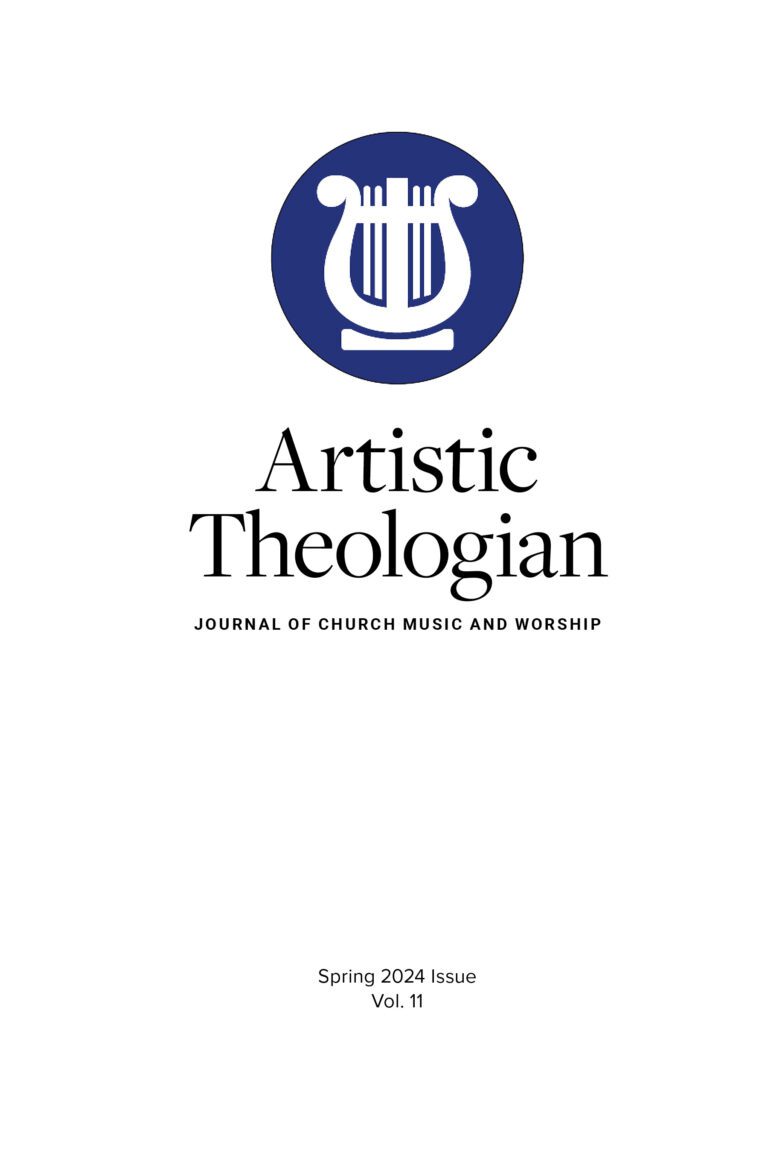
The Relationship of Doxology and Doctrine
Artistic Theologian
Volume 11, Summer 2024
Editor: Joshua A. Waggener
The Worship Architect: A Blueprint For Designing Culturally Relevant and Biblically Faithful Services. By Constance M. Cherry. 2nd Ed. Grand Rapids, Mi: Baker Academic, 2021. 340 Pp. $20.99.
Cherry serves as professor emeritus of Christian Worship at Indiana Wesleyan University and is on faculty at Sarang Global Academy in Seoul, South Korea. In The Worship Architect, Cherry endeavors to help those who lead and plan worship services to be “biblically faithful, corporately authentic, and culturally relevant” (4). Of utmost importance for Cherry is that worship, particularly in the local church, is pleasing to God. As an architect divides the task of designing and construction in “phases,” Cherry divides The Worship Architect into four sections and equates the organizers of worship as architects.
Phase one (chapters 1 and 2) is devoted to the architect’s first step in constructing a building: the foundation. In chapter 1, Cherry lays out a definition of worship that will be built upon in subsequent chapters. Worship not only encompasses the Sunday morning activity but should be seen as a journey—moving closer to God both physically and spiritually (28). In chapter 2, Cherry reminds the reader that Christ is the cornerstone. As the cornerstone is fundamental in the construction of a building, Christ is the cornerstone in Christian worship (33).
Phase two (chapters 3 through 8) outlines the creation of four necessary rooms (movements) that can be seen as sections in a worship service that follow each other linearly (59). Discussing the role of the Holy Spirit in chapter 3, Cherry contends that the Holy Spirit will guide the worship architect in planning thoughtful, Holy Spirit-inspired services. Making a thoughtful plan before the service does not diminish the role and inspiration of the Holy Spirit, as order is something to be desired, not shunned (53).
Chapter 4 discusses the Gathering, the first room a worship architect builds. Succinctly, the Gathering is the call to worship that not only helps the participant prepare to enter the next room in worship but reminds worshipers of Christ’s presence (70). In chapter 5, the worshiper enters the second room, the Word—the time when people prepare to hear from God by the reading, preaching, and proclamation of the Scriptures. Whereas the Gathering is man responding to God, the Word is God revealing himself to man (86).
Chapter 6 is devoted to the third room, the Table. During this time participants uniquely “engage in the acts of worship” that retell the story of Christ’s death and resurrection (104). For worship services that do not celebrate the Lord’s Supper, chapter 7 discusses alternative responses to the Word (117). Chapter 8 illuminates the final room, Sending. No less important than the others, worship architects should not simply end the service but send the people out on mission (135).
Phase three (chapters 9 through 12) equates to windows in a building. Windows not only let in light, but they allow for “seeing in.” Cherry argues prayer, music, and the Christian calendar “enlarge the function of the structure in that they provide a means for perceiving what is beyond the structure” (141). Chapter 9 demonstrates not only the utility but the necessity of prayer in worship (144). Cherry describes various types of prayer and encourages architects not to be leery of “prepared” or written prayers (155).
In chapter 10, Cherry explains the necessity of singing in Christian worship using music. Beyond being biblically mandated, singing is an activity that allows all to participate and is a “vehicle for expressing and building our faith” (174). Chapter 11 continues with Cherry’s observations about music and offers practical advice for its evaluation, selection, and execution. Cherry calls on the “pastoral musician” to be “a leader with developed skill and God-given responsibility for selecting and employing music in worship that will serve the actions of the liturgy and reflect on theological, contextual, and cultural considerations, all for the ultimate purpose of glorifying God” (202). A pastoral musician (by its definition) refreshingly re-orients those tasked with making decisions to think of themselves from a pastoral perspective as opposed to a worship “leader” position. In closing this section of the book, chapter 12 gives a brief but detailed overview of the Christian calendar.
Phase four (chapters 13 through 15) illustrates how an architect must consider why a structure is built the way it is (243–44). In similar fashion, worship architects have a responsibility to consider how the structure of the service will engage and encourage participation. Chapter 13 defines style and attempts to demystify the stigmas that surround various styles such as liturgical, traditional, and contemporary. Regardless of style chosen, each can embody the four rooms and the movement through them. Cherry stresses that although style is contextual, it must always be subservient to content (253).
Chapter 14 refers to global worship defined as the greater worshiping community, not simply another ethnic group (273). Architects need to remember that believers, seekers, and non-believers will be in attendance simultaneously (274–82). In chapter 15, Cherry illustrates how a hospitable leader will engage and encourage all to participate fully in worship (300).
Cherry set out to equip organizers of worship services to develop, plan, and lead worship services that honor God and engage people. Cherry provides an abundance of practical tools through application sections in each chapter as well as updated appendices. The Worship Architect is accesible for anyone interested in understanding worship more deeply as well as a valuable resource for leaders.





